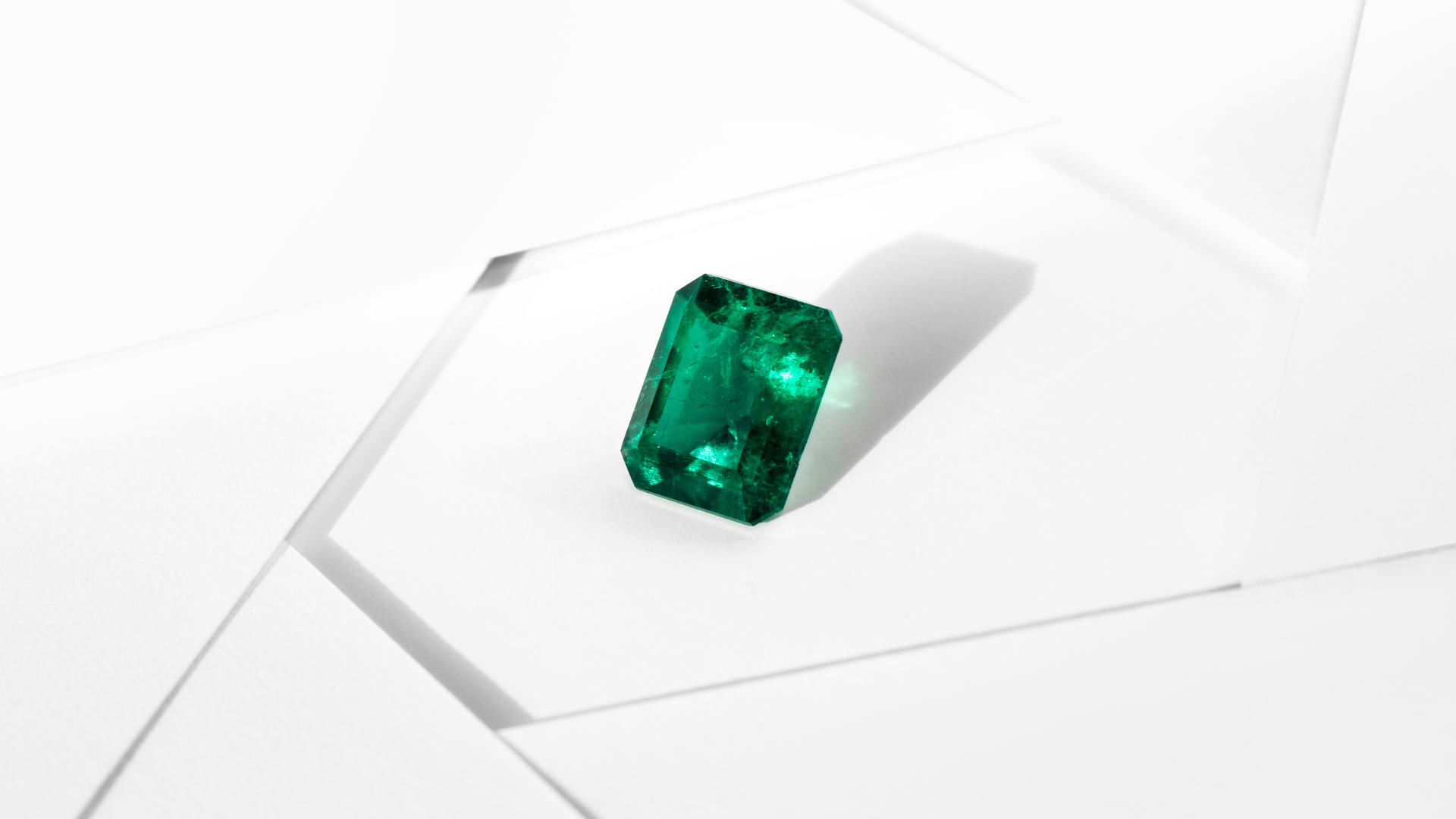10 things you need to know about Emeralds
Natural Emerald Crystal
1 | Were Emeralds important in the ancient world?
Yes! Humans have been pea-green with Emerald envy for over 6000 years. Emeralds were extremely important to the economy of ancient Egypt and beyond. The Egyptians had some of the earliest Emerald mines known to historians and gained much of their empire’s wealth from trading these elusive stones with other Mediterranean and African empires. Egypt’s Emerald deposits are now depleted meaning that they mined everything available but you may still find these magnificent stones on display in ancient jewelry from the time. The Getty Villa in Malibu, California has several pieces of jewelry in their permanent collection that feature Emeralds that were almost certainly from ancient Egypt.
2 | Where are Emeralds found today?
Emeralds are currently commercially mined in Colombia, Zambia, Afghanistan, Zimbabwe, Brazil, and Australia.
Emeralds are also found in many other places across the world but these deposits are either not economically viable (too expensive to mine), located in areas of political instability, or have low quality specimens that are not desired in today’s market.
Emeralds are also created synthetically in laboratories but like most synthetic stones, these are considerably less valuable than their natural counterparts.
A natural Emerald faceted in a customary Emerald Cut design.
3 | Where do the best Emeralds come from?
Colombia is unquestionably the Emerald locality that is most sought after and Emeralds from this country command top dollar.
So why are Colombian Emeralds so prized? Colombian Emeralds have been prized for centuries after being popularized by the Spanish because of their ideal color, occasionally impressive clarity, and provenance or historical importance.
4 | Why do Emeralds have Inclusions?
Most gemstones have inclusions and although some may not be visible to the naked eye, Emeralds are famous for showcasing their full natural beauty—inclusions and all. Emeralds tend to have more Inclusions than other varieties of gemstones and are designated as a Type III gemstone meaning that Emeralds are graded less harshly for their inclusions as these birthmarks are expected in these beautiful gems. Eye clean Emeralds are extremely rare and exceedingly valuable, truly flawless Emerald are most likely synthetic.
Assortment of faceted Emerald gemstones.
5 | Are Emeralds treated to improve their appearance?
Yes and it’s one of the rare occasions where treatment is not only common, it’s expected. Due to the prevalence of inclusions in these gemstones, every natural Emerald in the market today is assumed to be soaked in oil which is seen as a fully acceptable treatment in the gemological community. These “oiled” stones are second only to the immensely rare non-oiled Emeralds which are the most prized.
Most Emeralds need to be treated with more than oil to hide inclusions so paraffin waxes or resins are often used to “fill in” Emerald inclusions making them less visible to the naked eye. This process of adding another material to fill the voids in a gemstone is known as “fracture filling”. This treatment does lower the value of a gemstone but it also makes a previously undesirable stone usable so it is common practice. Most Emeralds available to consumers are fracture filled.
Always inquire about potential treatments when shopping for an Emerald.
6 | Is Emerald a birthstone?
Emeralds are the birthstone of everyone born in the month of May.
7 | Do Emeralds need any kind of special care?
Yes! Always handle and wear Emeralds with care. Never wear your Emerald jewelry in the pool, spa, ocean, or shower. Keep Emeralds away from household cleaners and all solvents as these materials may change the appearance of your stone by reacting with or dissolving fracture filling compounds and oils.
Emerald Engagement Ring
Do not put Emeralds in an ultrasonic cleaner as it can cause damage.
It is recommended to only use warm (not hot) soapy water to clean Emeralds.
8 | Are Emeralds believed to hold special powers?
Actually yes! Emeralds, like many other green gemstones, are widely believed to ward off evil by many cultures. Emeralds are also believed to be a strong symbol of fertility, bounty, and new life. Interestingly enough, some (including Cleopatra!) believed that Emeralds could reveal the truth or give the wearer the ability to see through deceit.
9 | Is there any way to know the origin of an Emerald?
Yes! Gemologists can identify where Emeralds come from based on their inclusions, spectrometry, and other chemical characteristics. If you have an Emerald you are curious about, you may send it into the world renowned Gemological Institute of America to have your gemstone analyzed for a flat fee. See the link below for details on GIA’s Emerald Origin Testing offerings.
https://www.gia.edu/gem-lab-service/colored-stone-analysis-report-service#accordion-1
(Please note that this link will lead you away from our website and that we are not responsible for their content.)
10 | Are Emeralds related to other gemstones?
Yes! Emerald is the deep green variety of Beryl. Other varieties of Beryl include the following:
Natural Emeralds showcasing their characteristic inclusions and green hues.
Aquamarine: Blue Beryl
Heliodor: Yellow Beryl
Bixbite: Red Beryl
Goshenite: White/Clear Beryl
Green Beryl: Pastel Green Beryl (not quite Emerald!)
Morganite: Pink Beryl





